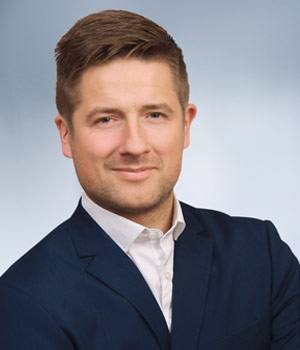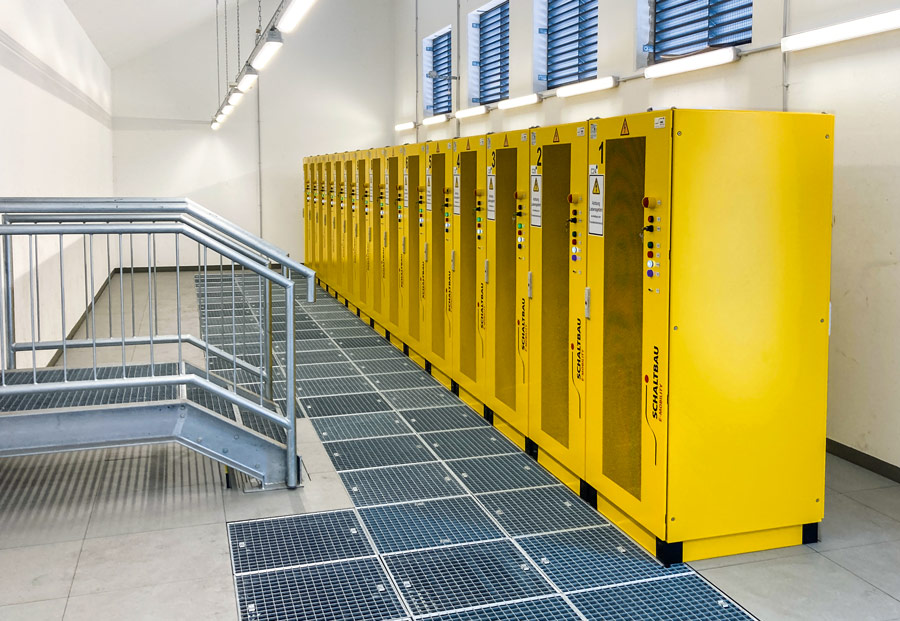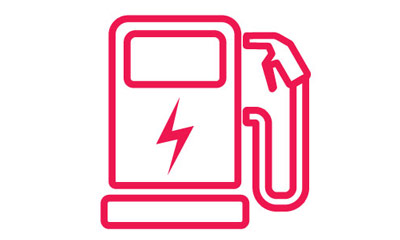Text Dr. Jörg Lantzsch ––– Photography
Public transport involving the use of buses is an ideal way of pushing forward the energy revolution in the transport sector. Cologne Public Transport Authority, for example, is turning to electric buses – and aims to have a fleet of over a hundred by the end of 2022. However, operating a fleet of this size calls for powerful charging infrastructure. You only need to look at the battery capacity to realise that charging e-buses is no trivial matter – these batteries are around ten times bigger than the equivalent battery for a car.
UP TO 53 BUSES CHARGED OVERNIGHT
Having planned, built and launched the charging system for Cologne Public Transport Authority’s northern depot, the plant engineers of SBRS have demonstrated how efficient charging infrastructure of this kind can be realised. The fleet of buses is charged overnight, using only green electricity. The vehicles are not connected to the charging station via a plug – instead, the connection is made via pantographs fitted to the roofs of the buses. The system, comprising 53 charging points, charges buses with DC voltage, delivering maximum power of 150 kW.
At its heart is the highly efficient SBRS intelligent load and charging management system. “In principle, it’s possible to fully charge the buses within 60 minutes,” says Markus Heine, Project Leader at SBRS. “However, in normal operations, they’re charged over a period of three hours or so to achieve maximum efficiency.” The electrical engineering technology is installed inside enclosures in a separate building. Thanks to the high degree of efficiency and therefore low levels of loss, no active cooling is needed for the enclosures.
There is one VX25 enclosure for each of the 53 charging points, and the power electronics, contactors and automation technology for the charging management are all installed inside these enclosures. The power semiconductors for the DC charging technology are modular in design. This means it’s easy to scale the charging capacity up or down in line with requirements. The enclosures have perforated doors on both the front and the back – and the only type of cooling that takes place is passive. The only fans fitted are for the power semiconductors.
STABILITY IS KEY
With the components inside each charging point weighing over 400 kg, the stability of the enclosures used is crucial. “We never had any doubts about the quality of the new VX25 in this regard, as we’d had good experiences with the previous model,” Heine explains. The flexibility offered by the system in terms of expansion is another plus point of the VX25. “What we get is a one-stop solution that includes everything from the enclosure and its installation components to the base and accessories such as a door switch,” emphasises Heine.
Two other particular advantages that helped win over SBRS were the very quick availability of the enclosures and the modular system of the VX25, which means that fewer different components are needed. The Project Leader firmly believes that fast delivery is extremely important, especially during the system implementation phase. After all, projects often have short timelines to begin with and delays in actually getting started on them are all too common.


